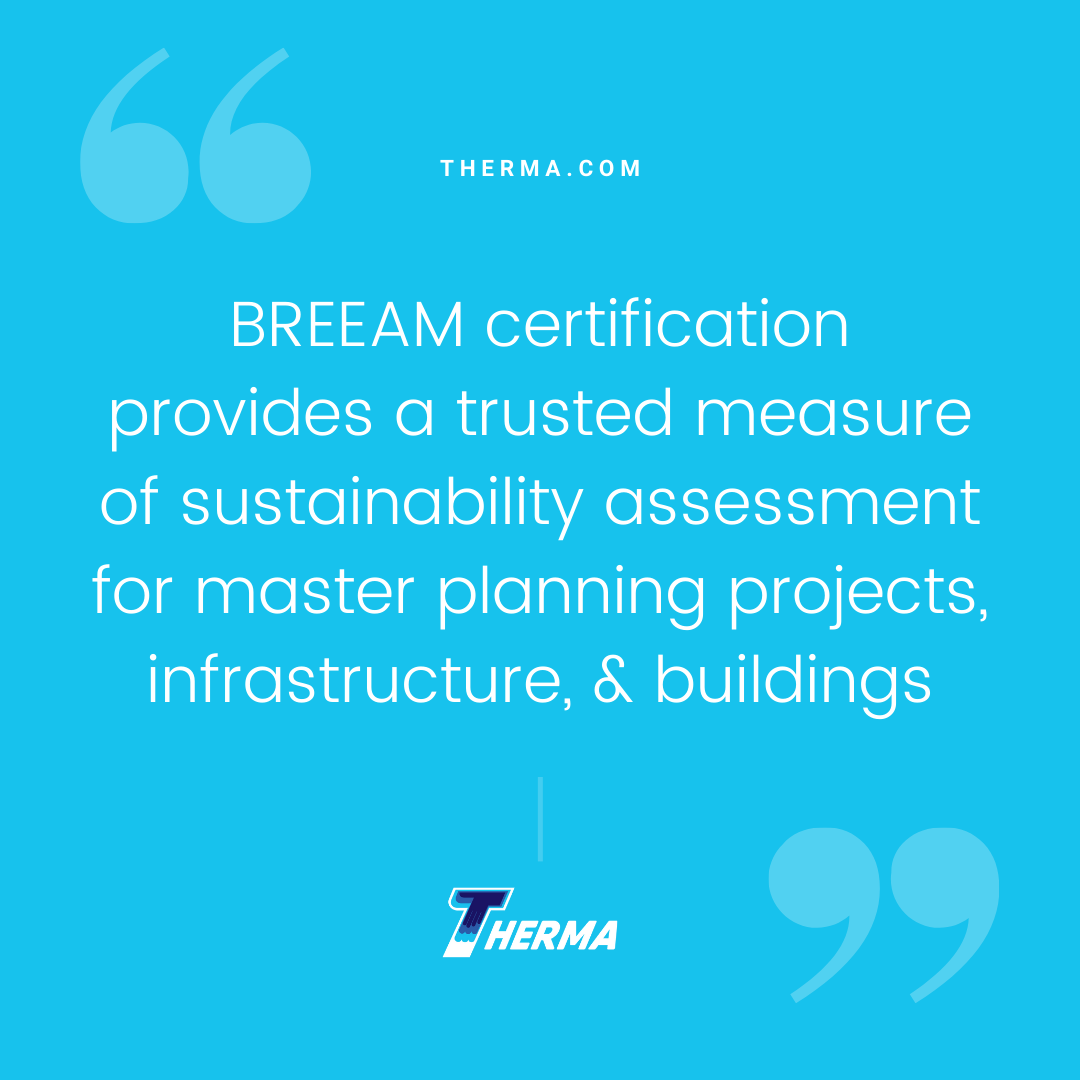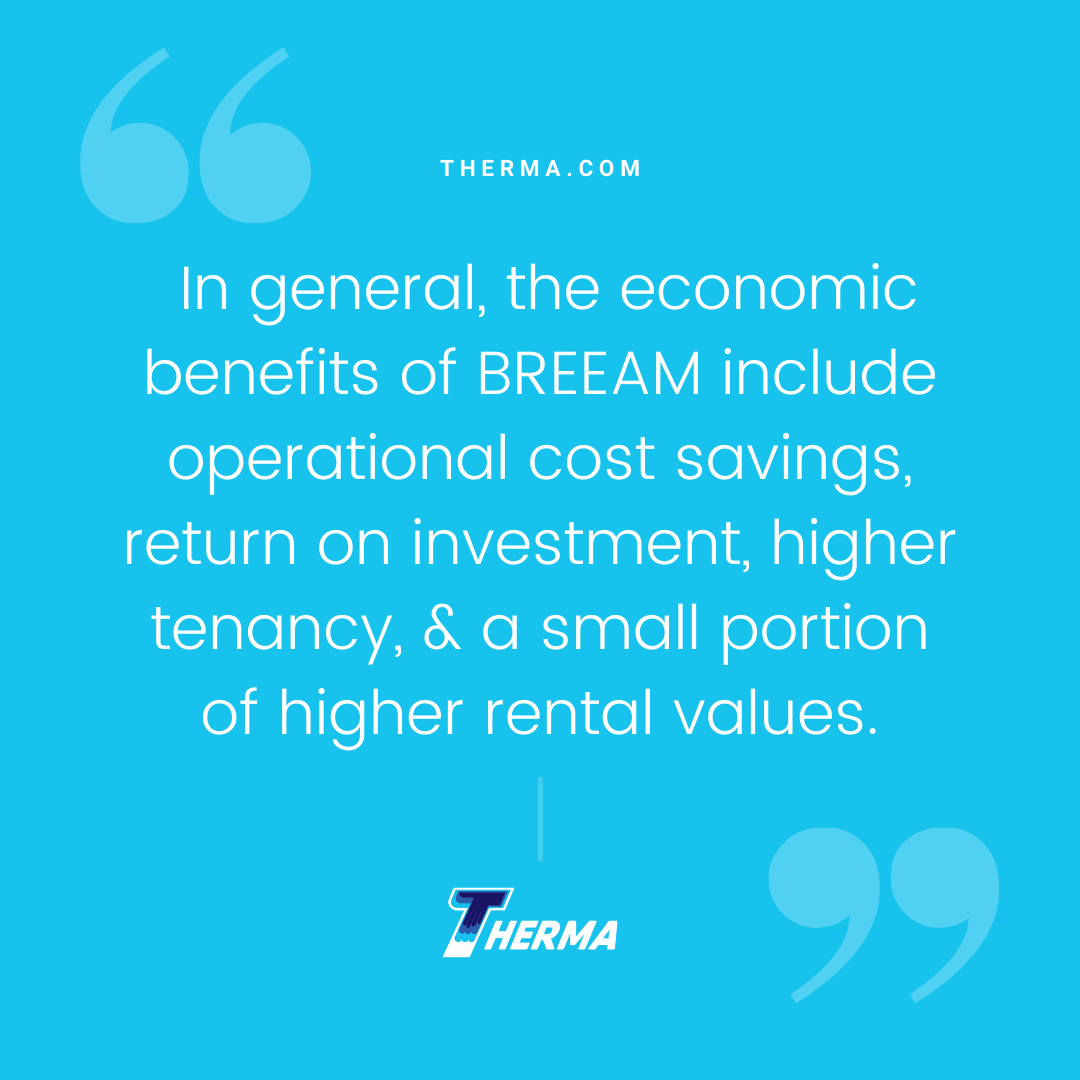Sustainability goals are a part of everyday commerce, governmental policies, and personal lifestyle choices. Eco-labels and certification schemes help create tools for consumers and businesses to navigate the complexities of social, environmental, and economic sustainability performance. BREEAM certification provides a trusted measure of sustainability assessment for master planning projects, infrastructure, and buildings. Here’s how:
What is BREEAM?
BREEAM stands for Building Research Establishment Environmental Assessment Methodology. Founded in 1990, it is recognized as the first sustainability assessment method for buildings. BREEAM uses standards that are developed by the Building Research Establishment (BRE), a center for building science in the United Kingdom. While based in the UK, BREEAM is widely used throughout 89 countries. The standards include a range of categories which are used to measure ‘sustainable value’. These include:
- Energy: focuses on energy efficient systems and equipment that facilitate sustainable energy use, decreased carbon emissions, and efficient building management.
- Health and Wellbeing: this category covers comfort, health, and safety for occupants, visitors, and neighbors of a building.
- Innovation: a way to recognize design or performance that exceeds the current standards; this helps foster new baseline methods for sustainable design.
- Land Use: this category looks at land use through the lens of restoration, habitat creation or protection, brownfield remediation, and development of sites of low ecological value.
- Materials: focuses on harvesting, processing, and other supply chain issues, along with durability and life cycle considerations.
- Management: this category acts as a stewardship criteria throughout the construction process, turnover, and subsequent operational activities that promote sustainability.
- Pollution: light pollution, noise, stormwater runoff, flooding, and emissions are all considerations within this broad category.
- Transport: this category looks at access and encouragement of sustainable transportation options for occupants and visitors.
- Waste: reduction of construction waste, reuse of materials, diversion from landfill, and lower operational waste are all considerations.
- Water: focuses on reducing potable water consumption and innovative ways to capture and utilize greywater onsite.
BREEAM standards are organized to be applicable to five development stages of projects, including Communities, Infrastructure, New Construction, In-Use (Existing), and Refurbishment / Fit-Out. Each standard uses the issues categories in a way that is relevant to varying scales and scopes of construction. Projects covered within the BREEAM standards can range from large-scale master planning to public infrastructure, to commercial buildings and residential homes.

In the US, BREEAM technical standards are available for new construction and in-use projects. The full set of technical standards for all project types are also available and used throughout Europe, Asia, Latin America, Africa, and Australia. There are over a half million BREEAM certificates issued worldwide and more than two million buildings registered to BREEAM standards.
How Green Building Standards Are Developed
Organizations like BRE that support standards development rely on stakeholder participation, which they facilitate through extensive standards consultation processes. A robust consultation method helps drive the credibility of a standard, making it a more trusted measure of performance and more valuable asset to end users. As the standards services provider, BRE engages its community of researchers, scientists, engineers, technicians, and stakeholders to develop standards widely recognized as academic and rigorous measures.
Benefits of BREEAM Certification
The community and processes behind BREEAM standards have given them credibility and driven the uptake of BREEAM certification around the world. BREEAM is established, its standards are robust, and its mission is clear. But how does BREEAM benefit those invested in the system?
A 2012 report from the Building Services Research and Information Association (BSRIA) surveyed clients, as well as construction professionals and others along the supply chain. The findings indicated that common benefits of BREEAM certification include:
- Recognition or industry standing (77%)
- Reducing waste and materials use (59%)
- Improved occupant satisfaction (59%)
- Operational and cost savings (43%)
- Higher rental values (12%)
With regard to recognition, many respondents felt BREEAM was beneficial to marketing and PR efforts. This feedback is also related to the end user experience, drawing tenants who seek “green” housing or facilities. Improved occupant comfort and satisfaction were reported by more than 50% of those surveyed.
The environmental benefits of BREEAM noted in the BSRIA survey included reduced construction waste, reduced embodied carbon (in materials), and reduced operational carbon emissions. These benefits were of particular interest to organizations with carbon emissions reduction goals, such as universities.
In terms of economic benefits, a BREEAM rating was recognized as a competitive attribute in certain market sectors, such as commercial office buildings. In general, the economic benefits of BREEAM include operational cost savings, return on investment, higher tenancy, and a small portion of higher rental values.

BREEAM Certification with Therma
As with any construction endeavor, the decision to pursue a BREEAM rating depends on the overall project goals. Many market sectors and industries are turning to certification as a way to reach a broader range of consumers or to manage risk, like those associated with illegal materials in the supply chain. The best way to determine how BREEAM can benefit your project is to work with a green building professional like Therma who can help you navigate the process and deliver on your project goals.
Ali Kriscenski was trained in high-performance building design at Boston Architectural College. She has worked with leading architecture and construction firms in NYC and New England and served on the executive team at Forest Stewardship Council International. She was Managing Editor at Inhabitat and has worked pro bono for the Green Building Institute, ISEAL Alliance, and Habitat for Humanity.
Sources
BSRIA Report – The Value of BREEAM
BRE Global – The Biophilic Office – Putting People First







